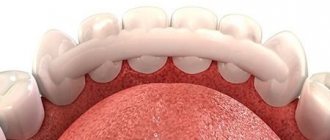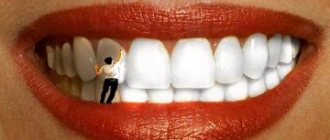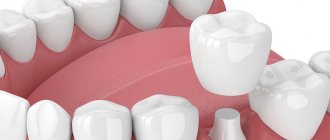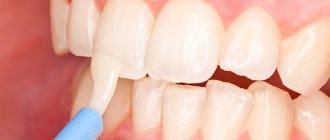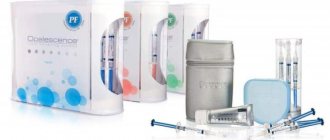Teeth are composed of minerals that provide high strength and prevent premature wear. But due to insufficient oral hygiene or pathological processes, they are affected by caries, which requires mandatory treatment by a dentist. The doctor carries out actions to eliminate the problem in several stages. The final step is filling. Dentistry in Kyiv successfully copes with this task. Doctors have a variety of materials in their arsenal that allow them to restore the entire structure of the tooth.
Requirements for fillings
Filling teeth protects them from infection, restores functionality, and improves aesthetic appearance. The result of treatment largely depends on the choice of filling material. It must meet the following requirements:
- do not pose a health hazard;
- be durable and wear-resistant;
- have good tightness;
- Match the color to the natural shade of the teeth.
Before the procedure, you should consult with your dentist. Modern technologies and materials make it possible to select a tooth filling as accurately as possible, taking into account its shade, texture and transparency.
Why is light filling considered the best?
Thanks to the advent of fillings made of light-curing composite, the quality of dental treatment has been raised to the highest level. A special material is used for them. It hardens only under the influence of a special lamp. The material has characteristics that allow a specialist to form the desired shape and adapt it to the required conditions.
The composite has earned excellent reviews in dentistry thanks to:
- long service life;
- aesthetic characteristics, which make it possible to carry out restoration even on the front teeth;
- health safety;
- the ability to choose a shade that will best match the natural color;
- virtually instant hardening.
Today, dentistry uses various composite compounds, which are produced in the USA, Japan, and Europe. One of the best is Enamel filling material, developed by Micerium SpA
But in case of severe destruction, tooth restoration will require more than just filling material. To strengthen the structure, it is necessary to use a pin.
Classification of fillings
According to purpose, filling material is divided into 2 groups.
Temporary fillings
The name of the species speaks for itself. Such fillings are also called diagnostic fillings. They are designed to temporarily eliminate a defect, therefore they are characterized by low strength and short service life.
The temporary filling can be easily removed if necessary. The dentist uses it to close a carious cavity when the tooth is very deeply affected, as well as when it is necessary to remove the pulp. When all the risks have passed and the doctor is convinced that everything is fine, the temporary filling is replaced with a permanent one. This filling is performed using one of the materials:
- aqueous dentin – powder, liquid;
- special cements, for example, zinc phosphate;
- dentin paste – powder, oil;
- polymers are special light-curing materials.
Temporary fillings are often used to diagnose a disease, or when there is a need for long-term treatment. For example, if a doctor cleans canals, he uses temporary material. If there is no pain or swelling, it is replaced after a few days.
Such fillings are placed to isolate the tooth cavity or fix the arsenic mass before extracting the nerve. The doctor leaves them for different periods - from 1 day to 2-3 weeks. The material hardens immediately, but since it is fragile, it is better to eat an hour or two after the procedure.
Materials from which fillings are made
All modern materials are divided into several groups. Let's look at the types of dental fillings.
Cement (silicate and silicophosphate) fillings
This material is also able to resist the re-development of caries, however, it is very fragile and may not last very long, or can be used as a temporary option.
Although this material has outlived its best years of popularity, however, it is not forgotten in some cases, since it has a low cost and is easy to use.
Plastic
Their popularity is explained by the same factors as the previous ones - low price and quick, simple installation.
However, they have many disadvantages:
- when the material hardens, severe shrinkage occurs;
- after a while, a color change occurs;
- increased abrasion of the material;
- secondary occurrence of caries is often possible.
Such fillings are the prerogative of free medicine.
Amalgams or metals
This material includes silver and mercury, or other alloys containing the second element. It is distinguished by its hardness and service life of up to 10 years. This material is dangerous due to its mercury content and the possible harmful effects of this element on fillings. It hardens for a long time and is difficult to use; the dentist must have high professionalism in order to place a filling from such a material.
Note: When installing a product made from this material, the dentist should take into account the fact that it expands greatly during the curing process, and accordingly, a fragment of the tooth wall, which is located near the filling itself, is possible.
Their use is popular on chewing teeth, as well as under crowns, when the composite will not be visible.
Composite
What dental fillings are considered the best of the inexpensive options are composite ones. They include plastic in their composition, but their distinctive feature is quartz powder, which provides them with the desired hardness. In addition, they are distinguished by relatively good color fastness and strength. Their service life is on average 2-5 years.
Light-curing composites
This is a group of materials that require special equipment in the form of a halogen lamp, they are also known as solar curing or photopolymer. It is with its help that the lamp is given the necessary hardness. When asked which fillings are the best, we can accurately answer that these are those made of this material.
Important: However, in order for a product made from this material to be as strong, durable and aesthetic as possible, it is necessary to carry out careful grinding and polishing.
If polishing is carried out once every six months, the color will last much longer. The most memorable feature of such materials is the mandatory use of special-purpose adhesives that can secure the raw material “tightly”.
It consists of various fillers and polymers that harden under the influence of that same blue lamp.
It has a fairly wide color palette, thanks to which you can choose any desired color and shade, as a result - as close as possible to a healthy tooth.
This material will last at least 5 years.
But such a seemingly flawless material has three main drawbacks:
- Shrinkage due to the chemical composition can be up to 5%, which reduces the quality of the installed filling. That is why it is better to use such material in small areas;
- with severe shrinkage, deformation is possible to such an extent that the thin wall of a natural tooth breaks off;
- incomplete hardening. Hardening of this material occurs only by 70%; more is impossible due to the peculiarities of using the lamp.
Glass ionomer cement
Dental fillings, which are considered the best for use in pediatric dentistry, since they contain 10-15% fluoride, which helps protect against re-infection. In addition, they are chemically bonded to the natural tooth, and therefore the likelihood of various cracks appearing is minimal. The coefficient of expansion under temperature is as close as possible to that of dental tissue, therefore minimizing the risk of the tooth cracking.
However, even this seemingly ideal material has its drawbacks. These are reduced strength indicators, both in abrasion and in bending. In addition, they do not look particularly attractive, and therefore are better used with more aesthetic fillings.
Chemically cured composites
This material was developed to replace conventional cement options. Their fundamental difference is the filler used, in this case it is porcelain. These composites can be further divided into:
- Light-curing.
- Acrylic-containing.
- On epoxy resin.
Composites that contain acrylic are highly durable and resistant, but they are also very toxic. It is often noted that after installation of fillings made from this material, a large number of pores appear. And the consequence may be the development of pulpitis or secondary caries both on this tooth and on neighboring ones.
Resin composites are more fragile, although they wear out less. They are not as toxic as their acrylic counterparts, however, they inevitably darken several years after installation.
Types of permanent fillings
There are many types of permanent fillings. Some of them are practically not used in dentistry today, others are being improved by scientists, which opens up new horizons in medical practice. Preference should be given to one or another material, taking into account the size and location of the tooth in the cavity. You should consult your doctor. He will tell you which fillings are best to install in a particular case.
Metal options (amalgam)
Based on metal alloys. The composition contains mercury, which has a toxic effect on the body. Because of this, they are practically not used in modern practice. Amalgam fillings also contain:
- silver – responsible for strength, has an antiseptic effect;
- tin – provides hardening;
- copper – guarantees a good fit to the tooth.
The material has anti-carious properties, good ductility and wear resistance. Only an experienced doctor can install it. The rare use of amalgam is due to its disadvantages:
- risk of allergic reactions;
- unaesthetic appearance;
- impact on the natural color of enamel;
- low level of adhesion;
- poor adhesive qualities.
Amalgams are not placed on central incisors and canines. They are contraindicated for patients who have metal structures in the oral cavity.
Cement - budget option
Cement fillings were used by dentists until medical science reached a higher level. They are a powder based on zinc oxide with impurities. The price of this material is low, it has anti-caries properties and prevents the development of secondary caries. Installing it is easy. Despite their advantages, cements are rarely used because they also have negative qualities:
- rapid darkening and erasing;
- poor fit to the walls;
- low level of adhesion;
- provoking allergic reactions;
- low strength.
Experts do not recommend using cements for filling in patients under 35 years of age. This is due to the fact that the density and hardness of the material is greater than that of dental tissue, which is why the enamel is quickly destroyed. Further, the tissue is damaged.
Types and methods of filling
There are different methods and types of filling teeth with fillings. Among the main techniques for applying filling mass are the following:
- Acid etching. When using this method, the tooth surface is pre-treated with a special acid. Then all roughness is ground off to improve the shrinkage of the material.
- Bonding. The possibility of using this method depends on what types of filling materials were used. The fact is that bonding is only suitable for filling with plastic. A liquid plastic mixture is placed on the damaged tooth surface, which seals all the holes.
- Adhesive technique. In this case, the filling material is attached to the tooth surface under the influence of photopolymer rays. This technique is used only for the restoration of teeth in the front.
- Sandwich technique. Few people know which fillings are best to place when using this method. The use of sandwich technology involves the addition of two materials. The upper part is made of composite, and the lower part is made of glass ionomer cement.
There is another common filling method - using a pin. It is needed to create a reliable frame on which the filling material will be attached.
Plastic options - a breakthrough in dentistry
Plastic fillings are characterized by excellent strength and long service life if installed correctly. Plastics are made from the following materials:
- Acrylic acids, which are toxic to the human body. This composition can provoke allergies in the patient. Often pores appear in it, which threatens to increase the risk of secondary caries. These dental fillings quickly darken due to smoking and drinking drinks containing dyes. Acrylic acids negatively affect the pulp and often provoke the occurrence of pulpitis.
- Epoxy resin. Its toxicity is much lower. Fillings of this type are installed on chewing teeth, because they darken over time. Resin is not suitable for restoration of the frontal group due to its fragility.
The cost of plastic fillings is reasonable. They are easy to match to the tooth color because they come in many shades.
The cost of plastic fillings is reasonable. They are easy to match to the tooth color because they come in many shades.
Composite Curable Types
Chemical composites contain an organic matrix (approximately 70%) and inorganic particles (at least 30%). The seal consists of a main part and a catalyst. Its advantages:
- high strength;
- uniform curing;
- inertness to saliva;
- excellent wear resistance.
Composites harden in a matter of seconds, so the doctor’s actions must be as fast as possible. Only a good specialist can deliver them efficiently. In addition to restoration work, the material is also used to fix mobile teeth with periodontitis.
What are the complications after installing a filling?
The most common complaint from patients after visiting the dentist is a feeling as if the tooth under the filling hurts. Such sensations are absolutely normal for several hours after treatment (up to 1 day), but if the pain does not subside the next day, this may mean that the doctor made a mistake, for example, did not properly treat the carious cavity before installing a filling. If a day has passed and the tooth still hurts, you need to go to the dentist again, you may have to take an x-ray and, if necessary, re-treat.
Another common reason for visiting a dentist is when a filling has fallen out. As we have already said, these structures have a certain service life, after which they need to be replaced; if this is not done, they can actually fall out. And in such situations, the main thing is to understand why this happened - because the tooth was not treated for a long time, or did secondary caries develop in it? As for fresh fillings, they can only fall out in the event of a medical error. Therefore, choose proven clinics where quality fillings are installed in Moscow.
Photopolymer – light-curing materials
Photopolymer filling is considered the highest quality. Lighting composites represent the latest generation of materials that provide excellent results. They are produced in the form of a paste that hardens under the influence of UV radiation from a special lamp. They are applied in layers (about 2 mm), which makes it possible to form the shape of the tooth as accurately as possible. Other advantages of the material:
- a wide selection of shades - allows you to choose the desired color, which makes the filling invisible to others;
- strength;
- application for restoration of anterior and lateral teeth;
- low toxicity;
- the highest aesthetic properties compared to other materials;
- slight shrinkage.
A photopolymer filling has virtually no disadvantages. If the restoration technology is followed, it will last for many years. The only negative is the higher price when compared with plastic and cement materials. But the expenses are justified, because the patient receives high quality. Today, dental clinics often work with photopolymers.
Review of the best popular dental fillings and their comparison!
Most often, before filling a tooth, the dentist asks the patient a question regarding the type of filling.
And it certainly causes confusion among most people, since today there are a large number of types of fillings. And in order not to make your choice at random, you need to know which dental fillings are better? We will also consider the cost of various filling materials.
All fillings differ in two ways:
- Their composition is ceramic, plastic, metal, etc.
- Regarding the application, the filling can be permanent or temporary. The latter are applicable when any medicine is used inside the dental cavity, while a permanent filling is focused on treatment at a time.
Dental filling is one of the main methods of caries treatment in modern dentistry. However, they are used for predominantly small defects. If the damage reaches a large size, then an inlay is used, which is an alternative to filling and is intended for large cavities.
What is the best filling material?
Many dental clinics offer fillings using several different filling materials. Price lists (including those posted on websites) are also often replete with various commercial names of fillings: Filtek, Spectrum, Aesthetics, Charisma (Karizma), Vines (Venus), Gradia, Estelite, Herculite, Point, Tetrik, Admira, Brilliant, Enamel Plus and others. Patients are asked to make a choice, but this requires dental-level knowledge, which most people, of course, do not possess.
Popular articles on the Internet for the following queries: “which filling is better?”, “which filling material is the best?”, “which filling is better to put?” and so on. – do little to clarify the situation. Most articles (often written by anonymous authors or copywriters) discuss only classes of filling materials: cements, amalgams, glass ionomers, chemical and light-curing composites. After a detailed description of materials that went out of use several decades ago (apparently to give more volume to the text), the conclusion is made that light-curing composites are the best, and if a person has the financial means, then it is advisable to install fillings from them. Either nothing is mentioned about specific brands of heliocomposites, or it is stated that they are all approximately equally good. Or “the latest generation nanocomposites” begin to be advertised.
Ceramic inlays
This material is distinguished by its excellent strength and aesthetic component, which is similar to the enamel of a healthy tooth.
Indications for use : large cavities formed as a result of complicated caries, replacement of old fillings, root canal treatment.
- Such inlays are much more durable than conventional fillings made directly into the tooth. If the cavity is large, then the only correct solution is an inlay. This is due to the fact that the fillings quickly become damaged. Thanks to ceramic microinserts, it is possible to strengthen the tooth extremely well.
- Perfect aesthetics. Ceramics are characterized by translucency, which allows you to simulate the color of a healthy tooth.
- A ceramic inlay models the anatomical shape of the tooth with extreme precision. Since it is not created in the oral cavity, it is possible to achieve an ideal shape.
- Resistant to external manifestations. Even drinking coffee and smoking cannot spoil their color over time.
- Fast production. At the first visit, the cavities are processed and an impression is taken. And the very next trip to the doctor will end with the installation of ceramic inlays in the oral cavity.
- Ceramic inlays do not sag, unlike fillings (shrinkage up to 2%).
Composite
Perhaps, for a budget option, these dental fillings will be the best in terms of price and quality. This material contains plastic, but the high hardness of the filling is ensured due to the fact that they contain quartz powder. In addition, they are characterized by excellent color fastness and durability. They serve on average about five years.
For the front teeth, light-hardening fillings are used; for the back teeth, universal fillings are used.
When is a chemical filling preferable?
You might think that such a concept as a chemical filling has long ceased to be relevant. But using new technologies does not mean ignoring older ones. For example, it is better to place a chemical filling at the initial stage of caries, if we are not talking about the front teeth. This allows you to prevent its re-development due to the release of fluoride and additional protection of the enamel. But in case of significant damage to the crown, light-curing fillings are simply irreplaceable; a composite can solve the most complex problem. It combines two competitive features of the material at once - the ability not only to make a smile more aesthetically pleasing, but also to restore the functionality of damaged molars.
At the same time, the geleocomposite is not installed on “sevens” and most often on “sixes” due to improper light polymerization of the material. Because of this, there is a risk of performing work deviating from the technology and thereby reducing the service life of the seal.
Price
Patients often choose one filling or another based on the cost of the filling material. And many people mistakenly believe that a good filling is expensive. This is not true, as there are a number of factors that determine the final cost of treatment. If you want to get a little guidance on prices, here are some approximate data:
- The cost of tabs ranges from 3 to 14 thousand rubles.
- Compomers will cost you 600-1000 rubles.
- The price of chemically cured composites is 650-800 rubles.
When choosing a filling, you must listen to your dentist, who, after assessing the situation, will help you choose the most suitable option. Otherwise, the need for a filling may return after a short time, and as a result you will spend much more than if you initially installed a quality filling.
Watch thematic video
Amalgam black
The main, durable and proven material is amalgam . It is mercury mixed with silver, tin and copper. It is used to fill the inside of teeth. Amalgam fillers are quite hard, relatively inexpensive and durable. They have antimicrobial properties, which means that they fight against the growth of bacteria and thus prevent tooth decay. For most interior applications where aesthetics are not a primary concern, they are a good choice.
The disadvantage of amalgam is its color. Classic amalgam has no chemical bond with the tooth.
What determines the service life
A light-curing filling can last up to 5 years and no problems will arise with it. But of great importance, for example, is the diet that the patient will adhere to after this. A high content of carbohydrates in the diet reduces this indicator, but the inclusion of plant foods in it, on the contrary, allows it to last for as long as possible. In this case, good grip is guaranteed by several factors:
- Under the influence of ultraviolet radiation, a chemical process occurs between the filling and the tissues of the tooth itself with the help of calcium;
- Before installing the filling, the tooth body is treated with adhesive, which is also illuminated with a lamp.
To ensure that the service life of the light seal is not reduced, the specialist must follow the technology in the smallest detail, which requires excellent professional training.
Zirconium dioxide
If tooth decay is more than 30%, then you should turn your attention to one of the new methods of microprosthetics - zirconium inlays. Such inlays will provide an excellent aesthetic appearance of the structure, as well as high strength, not inferior to metals. Pros:
- The most natural appearance, providing a magnificent aesthetic effect.
- Over time they do not darken or stain, which indicates good performance.
- Minimal risk of allergies.
- Can be used on front teeth. The zirconium inlay is not translucent and does not impart a blue tint to the future tooth.
- High wear resistance.
There is only one disadvantage - high cost.
Zirconium inlays are prescribed:
- With a completely destroyed tooth;
- For defects in the shape or location of teeth;
- As a support for bridge structures.


